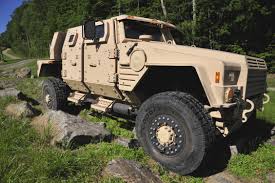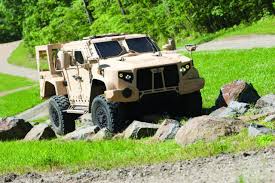
Protest! No Miss Congeniality consolation prize in JLTV contest
The Joint Light Tactical Vehicle program has dragged on for nearly a decade, with bidders spending millions and millions just for run-off prototypes. No wonder ...
If you look at the absolute numbers, very few contracts the government awards end up in protest court.
Out of millions of contracts a year, only a couple thousand land at the doorstep of the Government Accountability Office. But protests command a lot of attention, especially for big expensive programs.
Sometimes bidders spend so much to get to the award stage, they probably plan a protest strategy simultaneously to their bids.
A case in point:
Lockheed in September protested the Army’s August award to Oshkosh the contract for several thousand of the new Joint Light Tactical Vehicles, or JLTVs. Lockheed was building its offering in its Missiles and Fire Control factory in Camden, Arkansas.
Earlier, the company produced a slick webinar as if the award was a foregone conclusion. The video shows “production readiness vehicles” for testing and proving supply chain, assembly, and quality control.

The JLTV program has a long history, dating back to 2006. So long and arduous has been the interaction between the Army and the various bidders, that the stakes are too high not to protest.
Back in 2008 the Army (there’s a Marine Corps variant of the JLTV too) awarded seven bidders the chance to enter the technology development phase of the project.
It took until January 2012 for the Army to release a request for proposals to move onto the so-called EMD phase of the program, or engineering and manufacturing development stage.
It would eventually lead to the award last summer to actually start making quantities of the darned things.
JLTV drags a long, tortured history of protests along the way, waxing and waning program support, changing specs and requirements, and a bewildering array of options and configurations. My guess is the three final bidders — Lockheed, Oshkosh and AM General — spent tens of millions of dollars, maybe hundreds of millions each, designing and building their prototypes and the facilities to produce them.

All this for an expected quantity of 55,000 units, plus foreign sales. The first batch is to be 17,000 with a value of $6.75 billion.
Just as a point of reference, the Ford Mustang, famously shepherded through the byzantine Ford Motor Company by Lee Iacocca in a record two years or so, sold more than 400,000 units in its first model year — at around $2,500 apiece.
The analogy doesn’t go far. JLTV entries, despite their pugnacious, no-nonsense appearance and drab colors, are high tech wonders, regardless of who ends up building them. The Mustang was basically a tarted up Falcon.
The bidders come at JLTV from different angles. Lockheed is more known for things that fly, and its last commercial airplane ceased production in 1983. ( I knew that plane intimately. I spent hundreds of hours in first class on the old TWA L-1011 TriStars.)
Oshkosh is an old-line manufacturer of all sorts of brawny equipment like fire trucks, concrete mixers and municipal garbage haulers. Nothing that flies, though.
AM General, the smallest of the three bidders, also makes crawlers in commercial markets, but also has the prospect of supporting its ubiquitous Humvees for a couple of decades longer, even as it continues to build new ones. It opted to not protest.
All Lockheed would say publicly in filing its protest is that it believes its JLTV is more capable and affordable. The GAO is supposed to have a decision before the end of the year.
Copyright © 2024 Federal News Network. All rights reserved. This website is not intended for users located within the European Economic Area.
Tom Temin is host of the Federal Drive and has been providing insight on federal technology and management issues for more than 30 years.
Follow @tteminWFED





